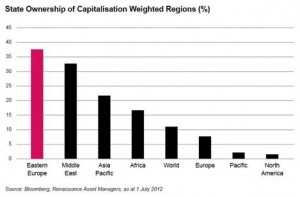The Unconstrained Joy of Investing
There is a famous paradox in finance literature called the Grossman-Stiglitz Paradox. It describes a world in which we have two choices: invest our time in fundamental research to find a good investment or choose the “market” blindly. The trade-off is clear: if there are arbitrage profits to be gained, people will invest the time in research, find the best investments to reap the rewards; if not, they will simply go with the status quo, and contend that there are no profits to be had, or at least not sufficient profit to warrant the expense of their time.
In efficient markets this is exactly what will happen: investors will take the status quo and not invest in research. However, without research, fund flows are effectively “dumb” and create mispricing, gradually pushing markets into inefficiencies. Market inefficiency creates opportunities to profit, which in turn pushes investors to re-invest in research, and so mispricings are gradually corrected and the market becomes efficient again. The paradox is that the market is never in equilibrium and is always in flux.
Fast forward to the present day and we face a similar choice: to invest in a benchmark (“dumb” money) or to allocate to individual stocks that we understand and research (“unconstrained investing”). Given the torrent of allocation flows into exchange-traded funds (ETFs) and other index-led investment funds, one may well be convinced that markets today are thoroughly “dumb”. These are some reasons, therefore, why we believe that “unconstrained” investing has real value to offer.
Supporters of indexed funds will attempt to raise the spectre of the “equity risk premium”. They will have to work hard, as the idea that the equity market generates returns above inflation is all but dead. Even if we look at the long-run returns in the US, arguably one of the most successful in the world, we see that real returns after inflation have tended to vary between 6% per annum and -3% over a 25-year cycle. If you happened to be in the wrong 25-year cycle, like the retirees of the 1980s for example, your compensation for bearing equity risk was negative. Meanwhile, good companies continued to generate profits, pay dividends and enjoy a boom in corporate earnings.
Another bi-product of “dumb” money is the allocation to state-owned companies in Eastern Europe (see graph). While state-owned firms can benefit from pseudo-monopolistic pricing and they dominate the Russian stock market, which trades at a significant discount to its large emerging market peers and so offers good value for the investor, there is no reason that these companies should always command a major share of an investor’s portfolio.
Finally, good corporate governance is essential in countries with weaker rules of law. Direct recourse to assets is difficult in the best of times – and near impossible when governments are involved. The ability to enact change in dividend policy, corporate divestiture and management is heavily compromised when the minority investor is secondary to state considerations. Given the wide acceptance that corporate governance is a desirable and indeed necessary component of investing, it is distressing to see that index investing is completely ignorant of it. In fact, one can argue that state-owned enterprises provide the least corporate control, but command the greatest flow of “dumb” money.
Investing in entrepreneurially-run firms is, we believe, the cornerstone of an intelligent approach to capital allocation. That is why we invest a great amount of our time and resources to understanding entrepreneurial companies that do not command flows from “dumb” money, and so provide the better – and smarter – opportunities to add value for our clients.









